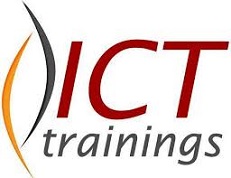MongoDB is a powerful and flexible NoSQL database offering a document-oriented data storage approach. Unlike traditional relational databases, MongoDB stores data in flexible JSON-like documents, making it ideal for handling unstructured and rapidly changing data. In this article, we will explore the critical concepts of MongoDB and provide a beginner’s guide to help you understand how to work with this popular database management system.
What is MongoDB?
MongoDB is a leading NoSQL database that allows you to store, manage, and retrieve large volumes of data. It uses a document-based model, storing data in flexible, self-descriptive documents in JSON-like structures called BSON (Binary JSON). This document-oriented approach provides a more natural way to represent complex relationships and hierarchical structures in data.
Compared to traditional relational databases, MongoDB offers several advantages. It provides high scalability, allowing you to distribute your data across multiple servers efficiently. MongoDB’s flexible schema design allows for dynamic and evolving data structures, eliminating the need for rigid table schemas. Additionally, MongoDB supports rich query capabilities, including ad hoc queries, indexing, and advanced aggregation functions.
Key Concepts in MongoDB
To effectively work with MongoDB, it’s essential to understand its fundamental concepts:
Collections and Documents
MongoDB stores data in collections analogous to tables in relational databases. Each collection contains multiple documents, which are the primary data units in MongoDB. Documents are similar to rows in traditional databases but are structured as JSON-like objects.
Fields and Values
Documents consist of fields and their corresponding values. Fields are the keys in the JSON-like structure, and values can be of various types, including strings, numbers, arrays, and even nested documents. The schema of a collection can be dynamic, allowing each document to have different fields.
Primary Key (or “_id”)
Each document in a collection has a unique identifier called the primary key. MongoDB assigns a unique “_id” field to each document by default, but you can specify your primary fundamental values.
Querying Data
MongoDB provides a flexible and powerful querying mechanism. You can search for documents based on specific field values or perform complex queries using operators such as comparisons, logical operations, and regular expressions.
Indexing
To optimize query performance, MongoDB supports indexing. Indexes allow for efficient data retrieval by creating an ordered structure that accelerates the search process. You can create indexes on single fields or compound indexes on multiple domains.
CRUD Operations
MongoDB supports four fundamental operations for working with data: Create, Read, Update, and Delete (CRUD). These operations allow you to insert new documents, retrieve existing ones, update their values, and remove documents from a collection.
Working with MongoDB
Several GUIs (Graphical User Interfaces) are available to work with MongoDB efficiently, such as MongoDB Compass and Studio 3T. These interfaces offer a visual representation of the database, allowing programmers to interact with it and perform queries without relying on command-line shells or manually typing questions.
Using these GUI tools, you can easily navigate the database, visualize collections and documents, and execute queries. They provide an intuitive interface that streamlines the process of working with MongoDB, making it more accessible for beginners and experienced developers.
In summary, MongoDB’s characteristics, including its support for ad hoc queries, replication, indexing, load balancing, and more, make it a powerful and versatile database management system. By leveraging GUI tools like MongoDB Compass and Studio 3T, programmers can enhance their productivity and effectively interact with MongoDB, making data storage, management, and retrieval more efficient and convenient.
Why do Programmers Use MongoDB?
- To store the Data
- To Manage the Data
- To Retrieve the Data
- To Create Web applications
- To Store a High volume of data
Characteristics of MongoDB
- Indexing
- Replication
- Load balancing
- Data duplication
- High performance
- Easy to administrate
- Schema-less database
- Support for ad hoc queries
- It uses procedures instead of JavaScript
- Support for map-reduce and aggregation tools
Conclusion
MongoDB is an excellent choice for managing large volumes of unstructured or rapidly changing data. Its document-oriented model, scalability, flexible schema design, and powerful query capabilities make it a popular database solution. By understanding the key concepts discussed in this article, beginners can confidently start their journey with MongoDB.

